If you’re torn between the Mercedes E 350 e and the BMW 530e, you’re not alone. These two plug-in hybrid luxury sedans are going head-to-head in a space that blends style, speed, and sustainability. I took both out for a few test loops—city drives, open roads, even tight parking lots—and I’ve got a story to tell.
This isn’t just about comparing specs. It’s about real-world performance, comfort, and how each one makes you feel behind the wheel. Let’s find out the differences between Mercedes E 350 e vs BMW 530e with a competitive analysis.
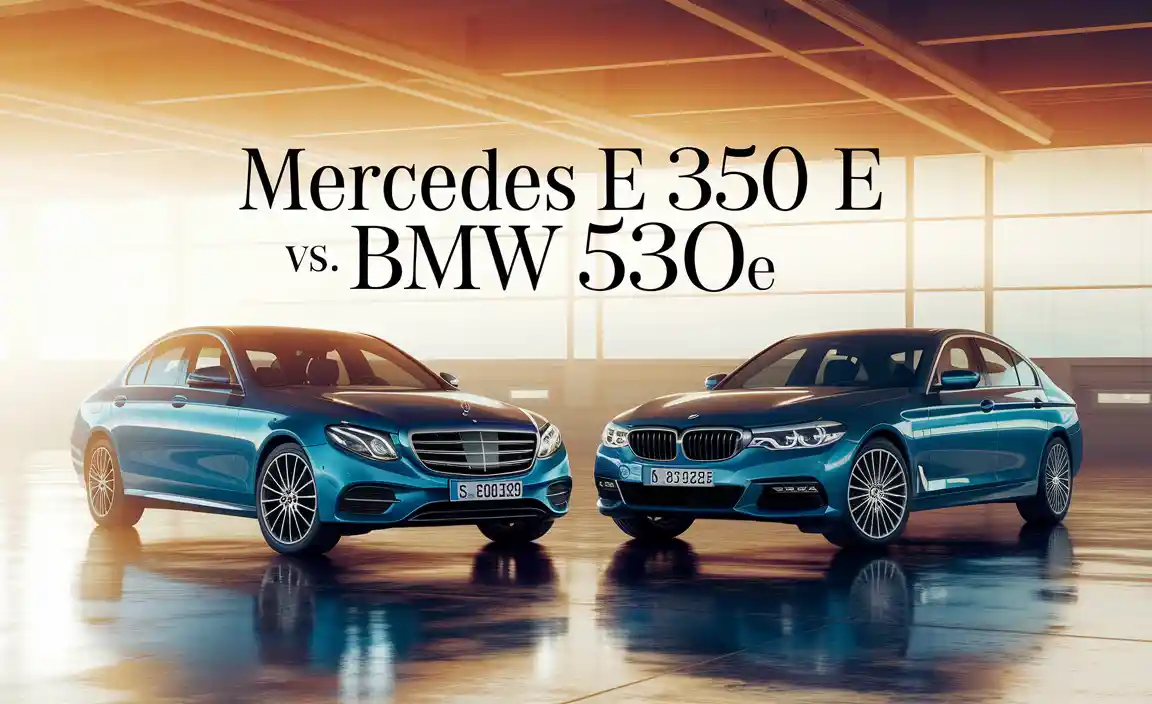
Mercedes E 350 E Vs BMW 530e: A Battle Of Electrified Executive Sedans
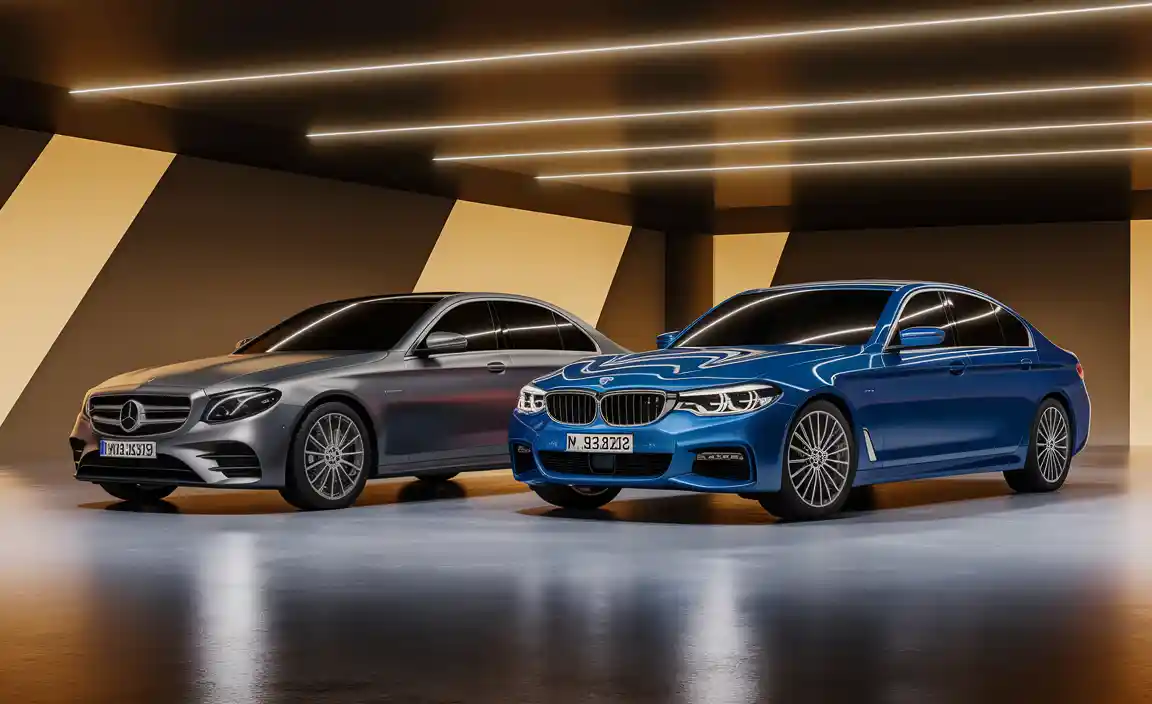
In today’s rapidly evolving automotive landscape, plug-in hybrids have become the sweet spot for drivers who crave luxury, performance, and sustainability in one package. Two standout contenders in the executive segment—the Mercedes-Benz E 350 e and the BMW 530e—bring electrification to the premium sedan world without compromising on refinement or driving pleasure.
Both represent the future of their brands, blending traditional craftsmanship with cutting-edge hybrid tech. But when placed side by side, which one offers the better all-round experience? Let’s take a closer look.
Powertrain & Performance
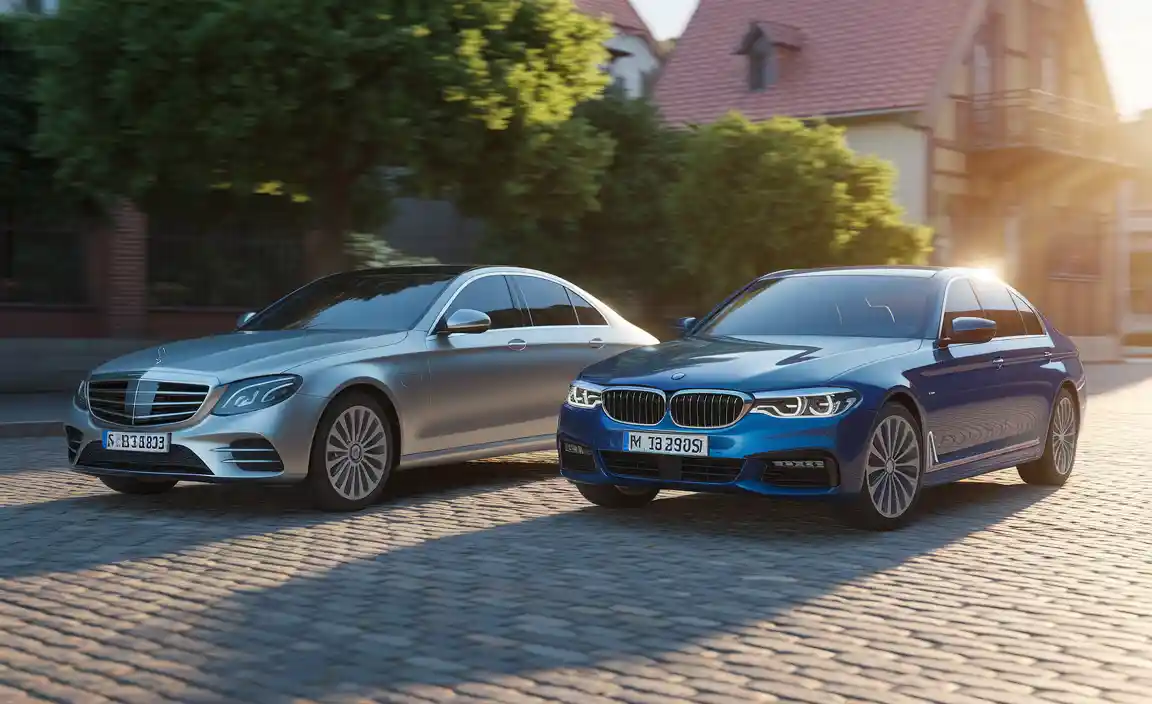
- Mercedes E 350 e
Combines a 2.0L turbocharged petrol engine with an electric motor, producing 308 hp and 550 Nm of torque. The transition between petrol and electric is seamless, and the 9-speed automatic offers silky shifts. - BMW 530e
Also features a 2.0L turbo petrol unit paired with an electric motor, churning out 288 hp and 420 Nm. The 8-speed Steptronic feels sportier, and with xDrive (AWD) available, it offers extra grip when needed.
Handling And Steering Precision
Both the Mercedes-Benz E-Class and BMW 5 Series deliver top-tier handling. But they do it differently. The E 350 e feels more relaxed, a bit like sipping a warm latte on a Sunday. The steering is light but accurate.
The 530e, on the other hand, is sportier. It gives you sharper feedback, especially in Sport mode. That M Sport Pro DNA shines through even though this isn’t a full-blown BMW M5.
Acceleration Capabilities
You’ll get decent power in both cars thanks to their electric motors paired with petrol engines. The 530e hits 0-60 a bit faster, especially when the battery is charged. But the E 350 e feels smoother under pressure, like it’s less strained at higher speeds.
Ride Comfort And Smoothness
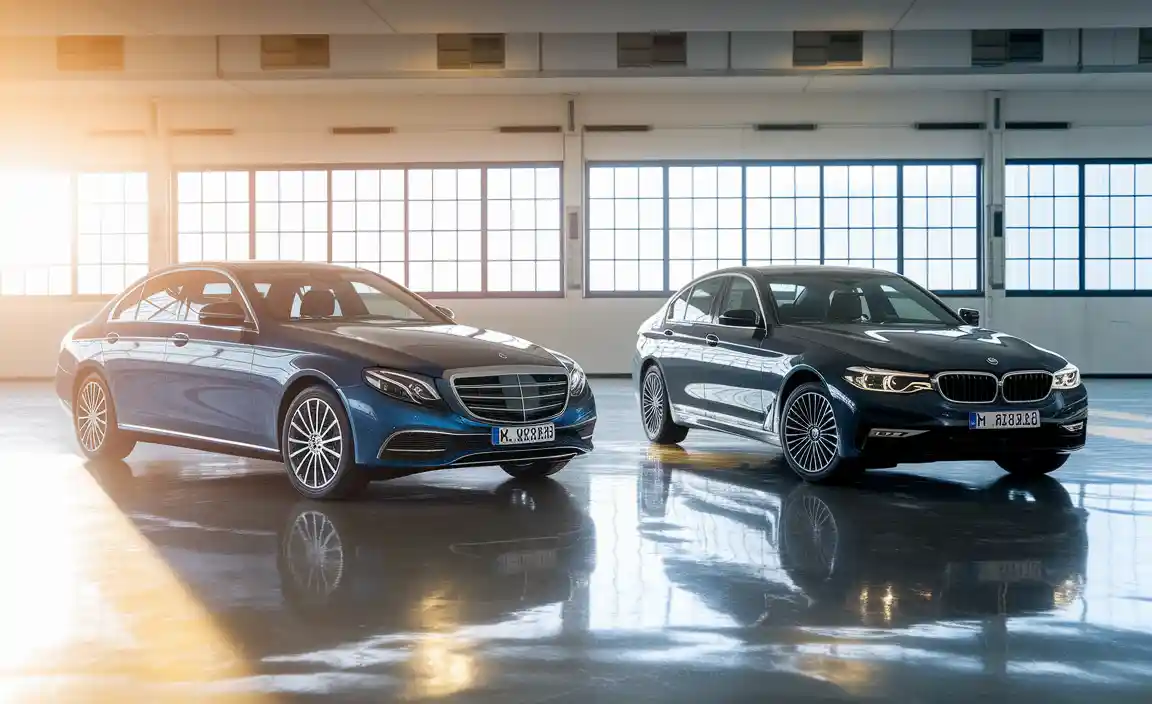
Here, the Mercedes E-Class takes the crown. Its available air suspension floats over bumps, making long drives feel effortless. The 530e is firm—but not harsh. You feel more of the road, which some people prefer.
Interior & Tech
- Mercedes E 350 e
Features the optional MBUX Superscreen, intelligent ambient lighting, and AI-powered customization. It’s a digital lounge on wheels. - BMW 530e
Clean, driver-focused cockpit with iDrive 8, a curved display, and minimalistic design. It feels refined but slightly more conservative than the E-Class.
🖥️ Verdict: Mercedes offers a more futuristic cabin, while BMW stays rooted in traditional ergonomics.
Comfort & Ride Quality
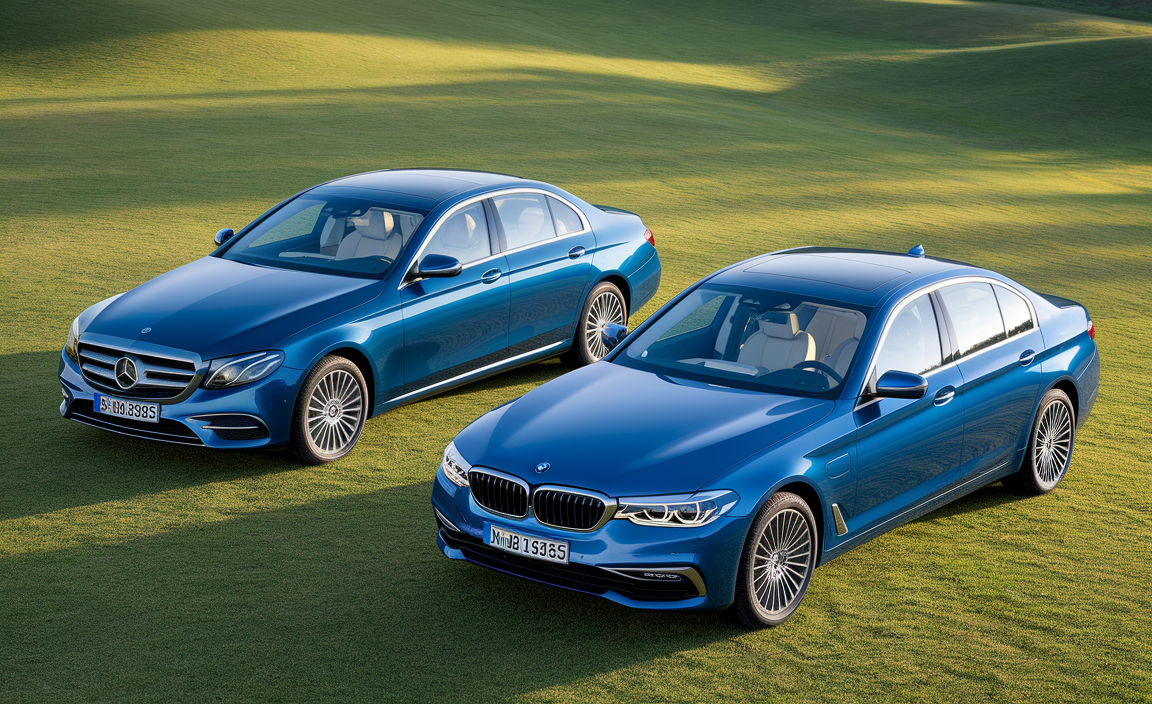
- E 350 e
Prioritizes comfort with air suspension (optional), plush ride quality, and a quieter cabin in EV mode. - 530e
Slightly firmer ride, better cornering stability, and more feedback through the steering wheel.
🛋️ Verdict: Mercedes is the better cruiser; BMW gives you the edge when driving gets spirited.
Ownership Considerations
Cost-Effectiveness And Value For Money
When it comes to value for money, it depends on what you value more. Mercedes leans toward luxury finishes and tech, while BMW packs more advanced technology into the drive itself.
BMW Financial Services and BMW Certified Offers often make the 530e more accessible, especially with lease plans. Mercedes, meanwhile, wins in resale strength thanks to that polished brand prestige.
Reliability And Maintenance Expectations
BMW Value Service offers solid maintenance support for the 530e. But Mercedes-Benz has earned a name for long-term reliability in the E-Class lineup. Both brands have excellent service networks, and maintenance costs are quite similar. If you want that extra peace of mind, consider a BMW Certified or pre-owned Mercedes-Benz model.
Brand Prestige And Image
There’s no wrong choice here—just different vibes. Mercedes gives off a classic, understated charm. It’s elegant without trying too hard. BMW feels younger, more aggressive. There’s a reason people still lust after the BMW M5 Touring. If you’re after status, both badges deliver.
Practicality And Usability
Cabin Space And Passenger Comfort
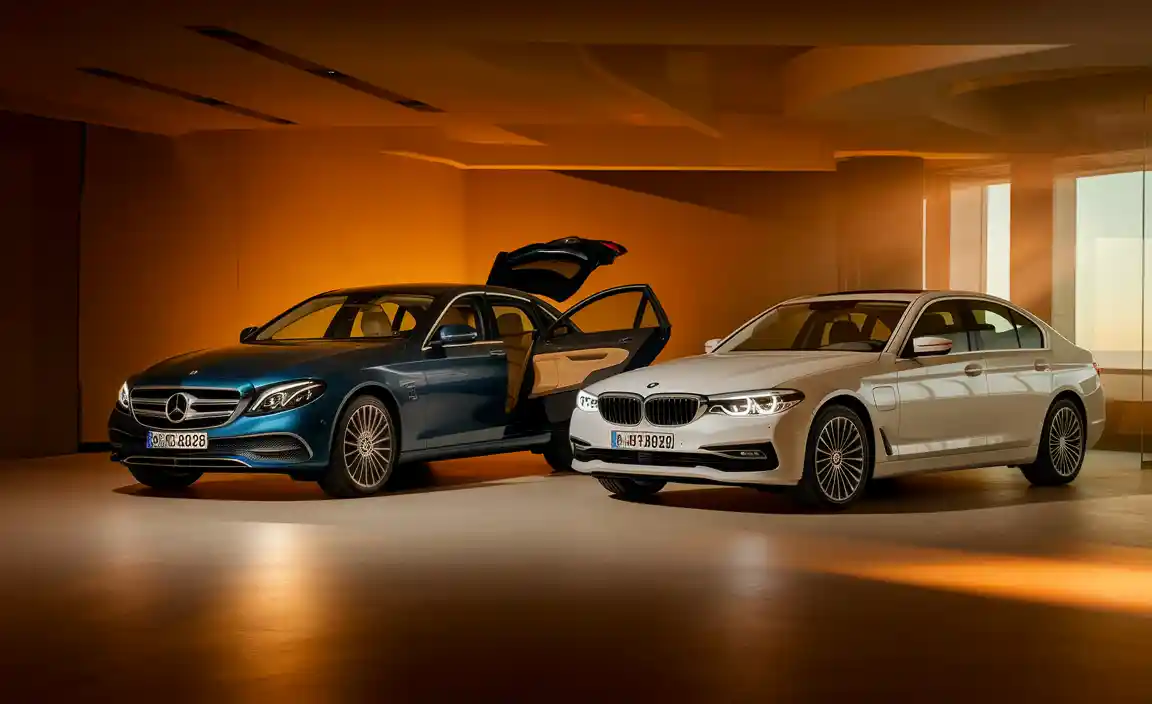
The E 350 e and 530e both seat five, but Mercedes wins in rear-seat legroom and ambient lighting comfort. You notice this during late-night rides or long weekend escapes. The 530e’s heated seats are fast and effective, and its cabin feels tech-forward with a strong BMW car identity. The E-Class brings a more relaxed, cocoon-like feel with soft materials and great insulation.
Storage Solutions And Trunk Capacity
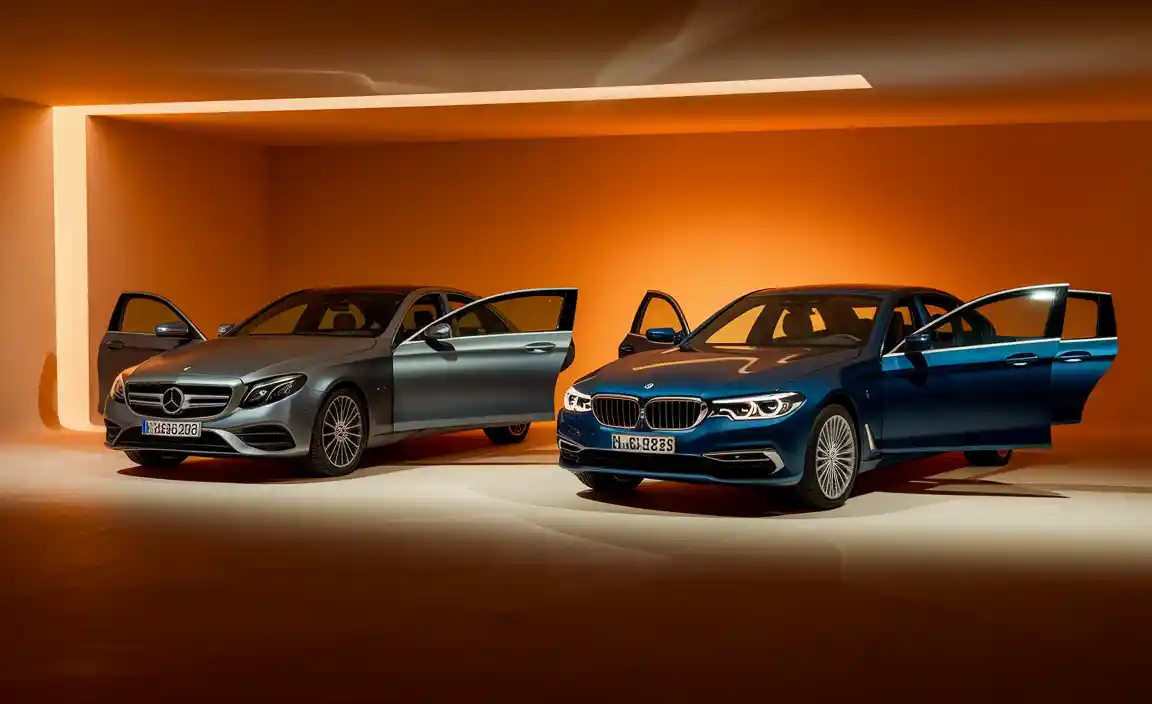
Due to the electric power systems and battery placement, both lose a bit of boot capacity. But the 530e edges ahead here, offering slightly more usable space. If cargo room is critical, that matters. Still, both sedans offer foldable seats, hidden storage nooks, and clever compartments.
Everyday Usability And Convenience
In day-to-day use, Mercedes wins on parking sensors, intuitive tech, and Apple CarPlay functionality. The 530e counters with slicker driver profiles and quicker startup-to-drive transitions. Both are easy to live with, from school runs to tight city parking. The curb weight doesn’t hold either back, though BMW feels slightly more nimble.
Specifications And Features
Technical Specifications Breakdown
The 530e features a 2.0L petrol engine paired with an electric motor, delivering around 288 hp combined. The Mercedes E 350 e runs a similar setup, but the power delivery is smoother—more balanced. Electric range for both lands between 30–35 miles, depending on how you drive and use climate control. Perfect for short commutes or errands.
Key Features And Technology Highlights
Both come with cutting edge technology like adaptive cruise control, gesture recognition, and cloud-connected navigation. Mercedes’ UI feels more elegant. BMW’s, more driver-focused. Plug-in charging is quick and simple on both. Neither offers fast DC charging, but you’ll be topped off overnight on Level 2 at home.
Electric Range & Efficiency
- E 350 e
Offers around 100 km (62 miles) of electric range (WLTP) thanks to a larger battery. Great for daily commutes without using a drop of petrol. - 530e
Provides about 60–70 km (37–43 miles) on electric-only mode. It’s enough for short city runs but lags behind the E-Class in all-electric usability.
🔋 Verdict: The Mercedes wins clearly on electric range and real-world efficiency.
Safety Systems And Driver Assistance
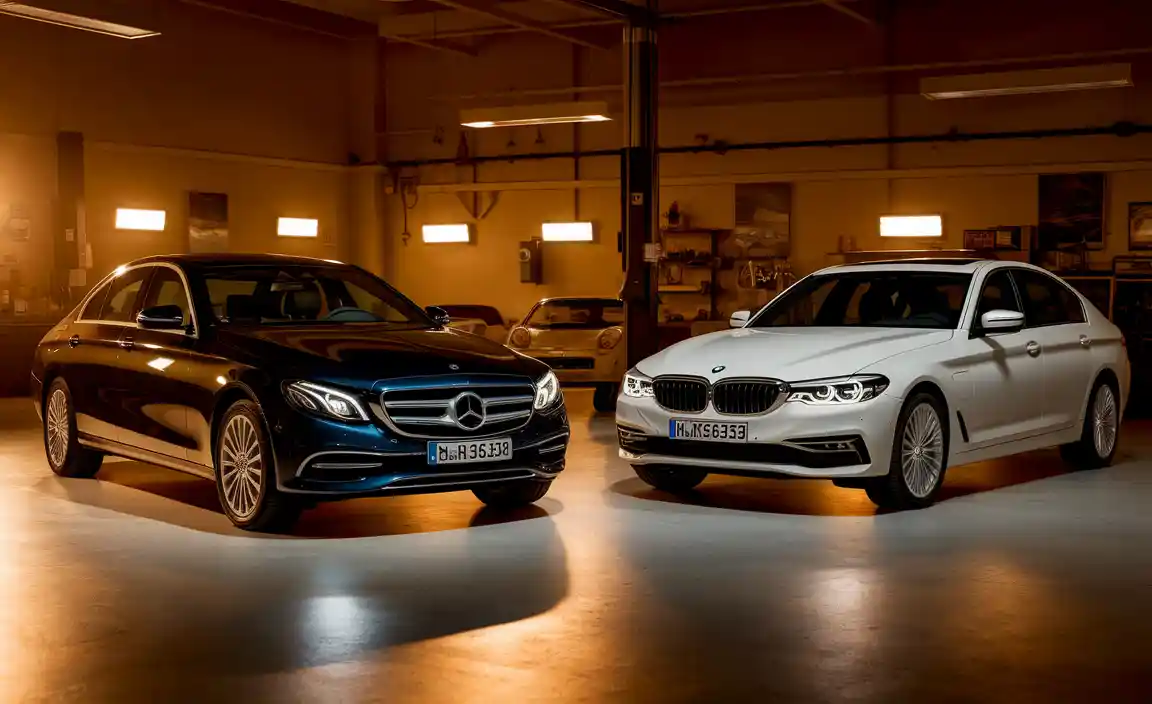
Safety is top-notch for both cars. They score highly in Euro NCAP and come loaded with features like rear cross traffic alert, lane departure warning, and auto-braking systems. Mercedes includes more in base trims, while BMW puts a few things behind trim level upgrades. Either way, both are serious about keeping you and your passengers safe.
Pricing And Value
Both sit in the same premium segment, but the E 350 e may command a slight premium due to its newer battery tech and longer EV range. However, the 530e often comes better equipped as standard. 💰 Verdict: BMW may offer slightly better value on base trims, but Mercedes gives more long-term electric benefits.
Base Pricing And Optional Packages
The E 350 e starts slightly higher than the BMW 530e, but that includes more standard features like navigation and luxury finishes. BMW lets you customize more aggressively with trim and tech packages. Watch for deals through BMW Certified or BMW Financial Services. Mercedes also offers generous loyalty discounts and EV tax incentives.
Resale Value And Depreciation Rates
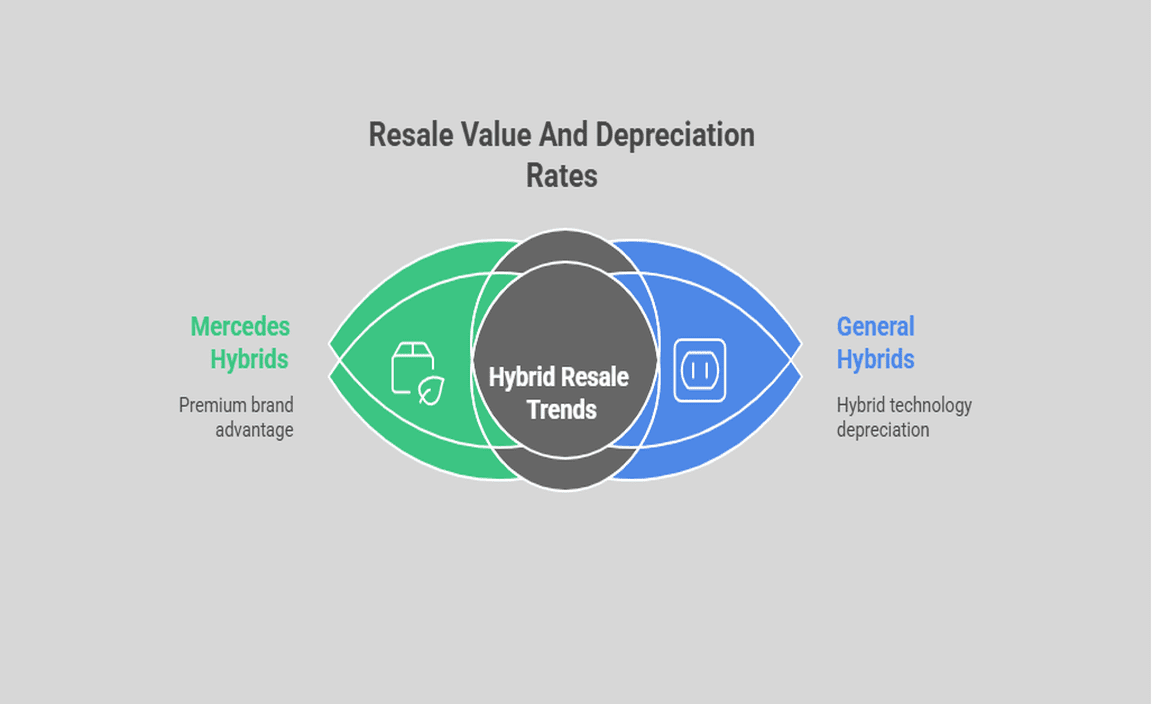
Both depreciate faster than traditional gas cars—typical of hybrids. But Mercedes tends to hold its value slightly better due to brand perception and overall rating. If resale value is key, Mercedes may be the better bet in the long run.
Financial Incentives And Availability
Incentives vary by region, but both qualify for local plug-in hybrid bonuses. The BMW X1 and Kia Sportage hybrids often get more public attention, but these two offer way more in terms of status and tech. You’ll also find demo and test car offers throughout the year, especially at end-of-quarter clear-outs.
Expert Analysis
Insights From Shane O’Donoghue
Shane praises the Mercedes-Benz E for its composure and cabin comfort, calling it a “rolling sanctuary.” He’s especially impressed by the E-Class’s ride quality and tech balance.
Analysis By Dave Humphreys
Dave leans more toward the BMW 530e for its sharper drive and more responsive steering. He notes that “it feels more alive on twisty roads” and appreciates the minimalist tech layout.
Future Considerations And Developments
Both brands are rapidly evolving. Expect longer electric range, better software, and more seamless integration in coming models. Mercedes-Benz will likely pull ahead in refinement, while BMW focuses on sport-driven innovation. In the battle of E-Class vs. BMW 5 Series, there’s no wrong choice—just a matter of what makes your everyday better.
Conclusion
The Mercedes E 350 e excels in comfort, luxury, and tech elegance. It’s smoother, more refined, and ideal for those who prefer relaxed driving. The BMW 530e is the athlete—sharper, faster, and a bit more exciting. Go with the BMW 530e if you love spirited driving, sportier looks, and a slightly lower base price. Choose the E 350 e if you want an ultra-smooth ride, superior comfort, and a sense of timeless class.
Frequently Asked Questions
1.Which Is Faster: Mercedes E 350 E Or BMW 530e?
The BMW 530e has quicker acceleration, especially in Sport mode. The E 350 e offers smoother power delivery, making it feel more refined on long drives.
2.What Is The Electric Range Of Both Models?
Both the Mercedes E 350 e and BMW 530e offer an electric range of about 30–35 miles, depending on driving conditions and climate use.
3.Which Car Is More Comfortable For Passengers?
The Mercedes E 350 e has better rear legroom and softer ride quality, thanks to its available air suspension. It’s ideal for longer journeys.
4.Do Both Support Apple Carplay?
Yes. Both models offer Apple CarPlay and Android Auto integration, though Mercedes’ infotainment system is considered more elegant in design.
5.Which Is Better For City Driving?
The BMW 530e feels more agile in tight spaces and has sportier steering. However, the E 350 e is easier to park and offers better urban ride comfort.
6.Are there major differences in pricing?
The Mercedes E 350 e starts at a higher base price but includes more standard features. BMW offers more flexibility with trims and packages.
7.How do their resale values compare?
Mercedes models, particularly the E-Class, typically hold value better than the 5 Series, especially in the luxury plug-in hybrid segment.
8.Which sedan is more fun to drive?
The BMW 530e is more responsive and engaging, especially in curves. It’s a better pick if you enjoy dynamic driving.
9.Do these hybrids qualify for EV incentives?
Yes. Both qualify for federal and local plug-in hybrid incentives in many regions, though benefits may vary based on location.
10.Which is more reliable long-term?
Both are well-built, but the Mercedes E-Class is known for long-term reliability. BMW has improved in recent years but may have higher maintenance costs.